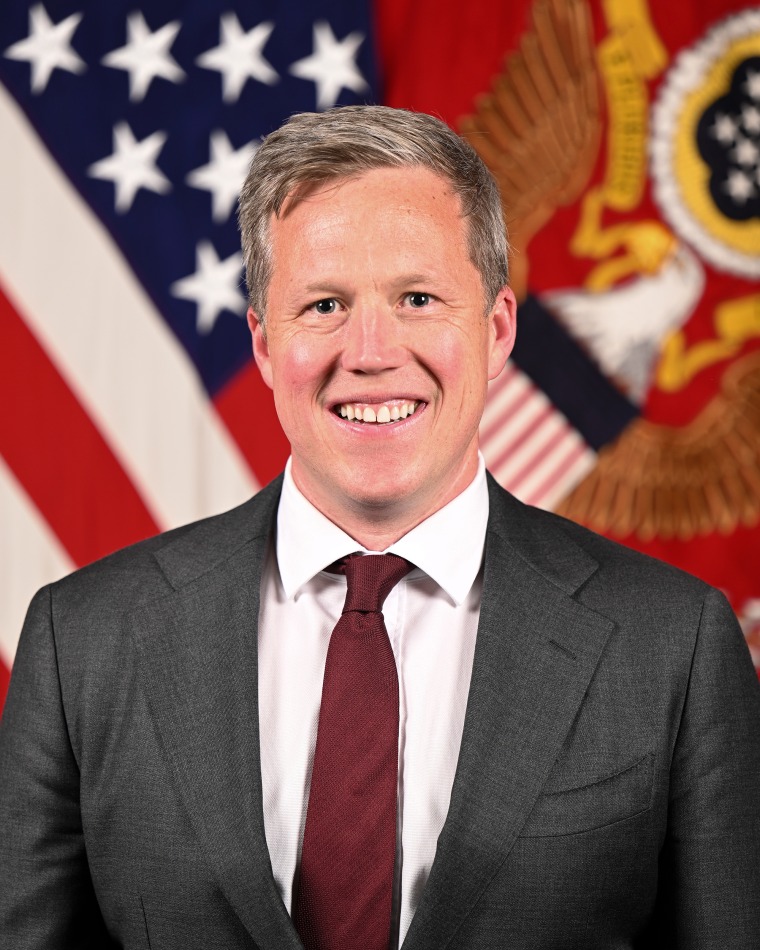WASHINGTON — Under pressure to make drastic budget cuts, Army leaders have struck an unusual agreement with Elon Musk and the Department of Government Efficiency: Don’t DOGE us; we will DOGE ourselves.
The process began at a March White House meeting attended by Vice President JD Vance, a Marine veteran; Army Secretary Dan Driscoll; and the Army chief of staff, Gen. Randy George, three defense officials familiar with the matter told NBC News.
Soon after the meeting began, Musk joined them. Together, the four men discussed Driscoll and George’s plans to cut hundreds of millions of dollars in what they and other Army officials agree is wasteful spending. The two men’s goal is to cut jobs, consolidate commands and radically change the Army acquisition process, the three officials said.

“We have been working to get the best, most lethal, most modern tools in the hands of our soldiers,” Col. Dave Butler, an Army spokesman, said in an email. “To do this we have to leave behind the anchor of obsolescence. We have to stop spending money on yesterday’s equipment and invest in war winning technology.”
Army leaders have long complained that members of Congress force them to spend billions of dollars on weapons, vehicles and programs they don’t want. Often, the spending is driven by members of Congress focused on bringing jobs and money to their districts or attached to legacy programs the Army leaders no longer want, the officials said.
George has argued that there are too many general officer billets in the Army and that some of them can be eliminated, the three officials said. And Driscoll believes there are civilian roles that have become redundant or outdated. The two leaders also suggested consolidating some Army commands, including U.S. Army North, U.S. Army South and U.S. Futures Command, the officials said.
“By combining headquarters and reducing general officer billets, we will prioritize the maneuver formations who fight and win our nation’s wars,” Butler said.
Musk and Vance approved, and now Army leaders have begun a campaign to make their own cuts instead of DOGE. They include eliminating several large Army programs; consolidating or slashing redundant positions, including general officers and civilians; and using a consulting firm to convince the public and Capitol Hill that the programs the Army doesn’t want are failing.
Army leaders are considering cutting 8% to as much as 20% of its civilian workforce, with an early estimate of about 20,000 cuts to start, the officials said. They promised to take a tailored approach to the cuts.

Two programs on the chopping block are the Joint Light Tactical Vehicle, known as the JLTV, and the High Mobility Multipurpose Wheeled Vehicle, commonly known as the Humvee. Army leaders hope to focus spending on the newer Infantry Squad Vehicle, known as the ISV, instead.
Another example is the Army could stop buying the Delta variant of the AH-64 Apache helicopter in favor of the AH-64E, which Army leaders prefer, the officials added.
Army officials also hope to stop buying the Gray Eagle drone and replace it with newer-model drones. Officials said they are also considering changes to at least seven other programs.
Expected congressional opposition
In anticipation of congressional resistance to reducing jobs and money in their districts, the Pentagon has prepared a “DoD Directive” that would give Army officials significantly more autonomy in what they can buy, according to the three officials.
The directive is expected to be signed this week. It would allow Army leaders to select the specific vehicles, drones and large weapon systems that the Army would use for years without Congress’ overruling them in the budget process. The issue is so sensitive that Pentagon officials must sign nondisclosure agreements before they are briefed on the details, the three officials said.
Since Driscoll was sworn in as Army secretary, his approach has been unorthodox. Driscoll, a close friend of Vance’s, joined the Army after having worked in finance. He has assured Trump administration officials and congressional officials that he would resist congressional pressure and let the Army buy what the military leaders believe they need, two defense officials said.

Driscoll has hired a public affairs consulting firm, MAD Global Strategy, to place news stories in targeted districts and make the case for why certain programs should be cut, according to the three officials.
One of the firm’s partners, Jai Chabria, was chief strategist and general consultant for Vance’s Senate 2020 campaign in Ohio, according to his company bio. MAD Global did not immediately respond to a request for comment.
The firm is tasked with sharing Army information with the public that shows that certain programs are inefficient, overpriced or outdated. Defense officials said it is the first time they can recall that the Army has intentionally released information about specific programs’ weaknesses to end them and convey to voters that Congress is forcing the Army to buy them.
MAD will give examples such as vehicles that are too heavy to cross bridges into training areas and expensive software from outside companies that could be produced inside the Army at far less cost. It will also describe historic buildings that the Army is forced to keep instead of constructing new ones, even though they’re expensive to restore and maintain.
The overall goal, the officials said, is to give the public evidence that the current acquisition process is costly, time-consuming and inefficient.
“Over the past twenty years staffs and overhead have become bloated and ineffective,” Butler wrote.


